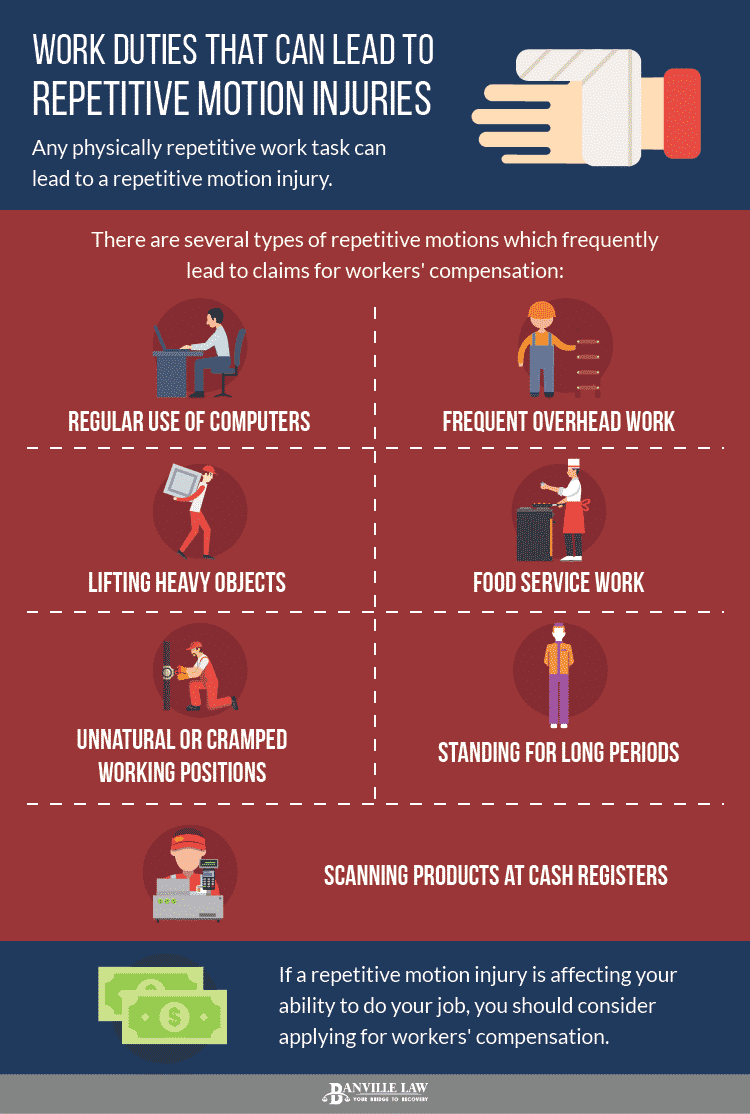During the course of your workweek, it’s likely you complete a few repetitive motions throughout each day. This is true of virtually all workplaces – from physically demanding construction labor to sedentary office work in front of a computer. While we’re all aware that there is a risk of getting injured on the job when certain hazards are present, many workers may not realize that repetitive motion injuries are a greater risk. These injuries slowly build up over time due to repetitive stress on the same body parts, even from acts as simple as typing on a keyboard and using a mouse.
As you may know, almost all New York employees (with a few exceptions for public workers who have their own systems) are guaranteed workers’ compensation coverage in the event of an injury. These cases may be relatively straightforward in some workplace accidents. But what about conditions like tendinitis, which could take years to accumulate to the point where they prevent you from working? Are workers with repetitive motion injuries guaranteed the same rights?
While it’s true that any work-related illness or occupational disease qualifies for workers’ compensation, it’s often difficult to receive the benefits you’re entitled to. Disputes and denials from employers and insurance companies are common – especially for repetitive stress injuries. You must provide medical evidence that backs up your claim, but your employer’s insurance carrier still may argue that your injury is not work-related. Workers in this situation often require the assistance of an experienced repetitive motion work injury lawyer.
Keep reading similar articles here: https://banvillelaw.com/workers-compensation/injuries/muscle-nerve/

According to the US Bureau of Labor Statistics, repetitive motion injuries require some of the longest absences from work – with a median of 23 missed days. Common examples of RMIs which may result in missed days include:
If you believe you have a work-related repetitive motion injury, you should file a report with your employer and seek medical attention as soon as possible.

Any repetitive work task has the potential to lead to a repetitive motion injury, but there are a few examples of motions which lead to the most workers’ comp claims:
If you’re experiencing pain or discomfort in a region which you regularly use for work tasks, there is a good chance it’s work-related. Don’t wait for the pain to become severe before you take action. If caught early enough and treated properly, you can greatly limit the damage of a repetitive motion injury. But if you ignore it and continue to put additional stress on the affected body region, the condition could become severe or even permanent.
As soon as you begin to notice symptoms, report the injury to your employer and meet with a doctor approved by the workers’ compensation board. During your doctor’s appointment, make sure to be very detailed about your job duties and how you think they may relate to your injury. Medical documentation and evidence is one of the most important parts of any workers’ compensation claim.
You have the option to represent yourself, but it’s usually much better to have the guidance of an experienced work injury lawyer when filing a claim or appeal. A knowledgeable and resourceful lawyer can help you meet all of the requirements of the Workers’ Compensation Board and negotiate with the insurance company’s lawyers on your behalf.
Claims for repetitive motion injuries are much harder to win than claims for accidental injuries, so legal representation is even more important for these injuries. At Banville Law, we know what the Board looks for and we know how to deal with insurance companies. We’re prepared to get you the help you need until you’ve recovered from your injury.
Our firm offers free consultations and we work on a contingency fee basis, which means you pay us nothing unless we win.
Looking for more related content? Check our next article: https://banvillelaw.com/ups-worker-dies-from-heat/